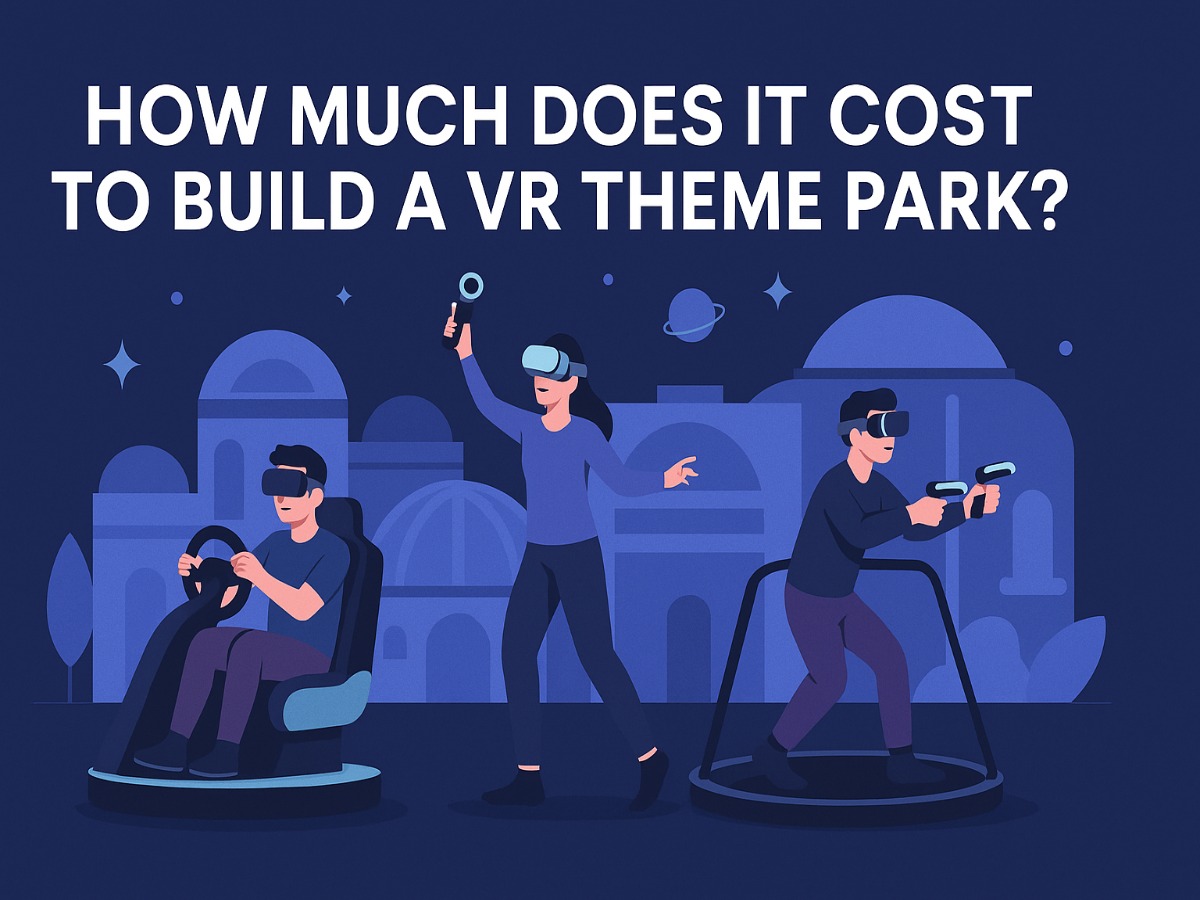Introduction: Understanding the Investment Behind a VR Theme Park
Virtual reality entertainment is booming worldwide, and VR simulator parks have become a highly profitable opportunity for entrepreneurs. However, before launching your project, it’s essential to understand the real investment structure behind a VR theme park.
This article explains the main factors that influence cost — from simulator equipment and space design to software, staffing, and marketing.
If you’re still exploring the setup process, you can also read our complete guide:
How to Open a VR Simulator Park?
Key Cost Factors in Building a VR Theme Park
1. VR Simulator Equipment and Hardware
VR simulator equipment is usually the largest part of the total investment. The overall cost depends on:
-
The number of simulators installed
-
The mix of experiences (racing, motion seats, multiplayer arenas, etc.)
-
Hardware specifications and immersive motion quality
A full VR simulator park typically includes a balanced combination of motion platforms, racing systems, and multiplayer setups.
Choosing reliable, well-supported machines ensures smoother operation, fewer breakdowns, and a better guest experience.
Tip: It’s more cost-effective to work with one supplier offering complete customization, installation, and maintenance rather than sourcing each simulator separately.
2. Venue, Design, and Decoration
The venue plays a crucial role in the overall experience.
-
Space requirement: typically between a few hundred square meters to accommodate multiple zones.
-
Layout planning: includes guest flow, safety zones, lighting, and theme decoration.
-
Design customization: thematic elements (e.g., futuristic, space, or adventure styles) can add great atmosphere but also influence the budget.
Partnering with a provider that offers end-to-end VR simulator customization helps ensure the layout, power, and ventilation systems are all optimized for performance and safety.
3. Software, Content, and Licensing
A successful VR park isn’t just about hardware — the content matters just as much.
Investing in diverse, regularly updated VR games or experiences will keep customers returning.
Factors that affect cost include:
-
Licensing agreements for game libraries
-
Updates and new content cycles
-
Multi-language support and customer analytics
Many park operators now choose subscription-based software models to manage costs efficiently and maintain fresh experiences.
4. Staffing, Operations, and Training
Even with advanced automation, human interaction remains key. You’ll need staff for guest guidance, equipment management, and maintenance.
Training costs depend on your team size and the complexity of the simulators.
Choosing a customization service that provides staff training and operation manuals can significantly reduce onboarding time and ensure safety compliance.
5. Marketing and Brand Visibility
Marketing is often overlooked but vital for early success.
Recommended actions include:
-
Listing your venue on Google Maps and review sites
-
Offering group or family packages
-
Running localized online ads or influencer collaborations
-
Hosting opening events and seasonal promotions
You can find more promotional ideas in our post:Best Marketing Strategies for VR Theme Parks.
Budget Composition Overview
Although the exact investment varies by city, country, and scale, here’s how most VR theme park budgets are typically distributed:
| Category | Estimated Share | Description |
|---|---|---|
| VR Equipment | 50–60% | Main simulators, motion systems, accessories |
| Design & Decoration | 15–25% | Theme setup, lighting, interior construction |
| Software & Content | 10–15% | Licensing and updates |
| Staffing & Marketing | 10–15% | Operations, team, and local promotion |
Each component can fluctuate based on customization level, content package, and regional costs.
For accurate planning, our team provides tailored budget simulations based on your site size and project goals.
How to Optimize Your Investment
-
Start gradually: Begin with a smaller setup and expand as visitor traffic grows.
-
Use modular designs: Make future upgrades easier without disrupting operations.
-
Focus on quality equipment: Durable machines reduce long-term maintenance costs.
-
Partner with experienced providers: End-to-end service reduces hidden expenses.
Our Full VR Simulator Customization Service helps you manage equipment selection, venue layout, and after-sales support in one streamlined process.
ROI Expectations and Growth Outlook
While every market is different, most successful VR parks reach profitability within a reasonable time frame once foot traffic stabilizes.
Key performance factors include:
-
Average ticket price
-
Daily visitor volume
-
Session turnover rate
-
Operational efficiency
A well-designed park with engaging content and effective marketing can achieve steady monthly returns and expand to multiple locations over time.
Conclusion: Plan Smart, Invest Confidently
The cost to build a VR theme park depends on your space, equipment, and customization level — but success always starts with a smart plan and reliable partners.
If you’re ready to evaluate your project potential or request a detailed quote, our experts can help you design the ideal setup for your budget and audience.
Let’s bring your VR park to life:
Contact Us for a Free Consultation
Post time: Oct-29-2025

